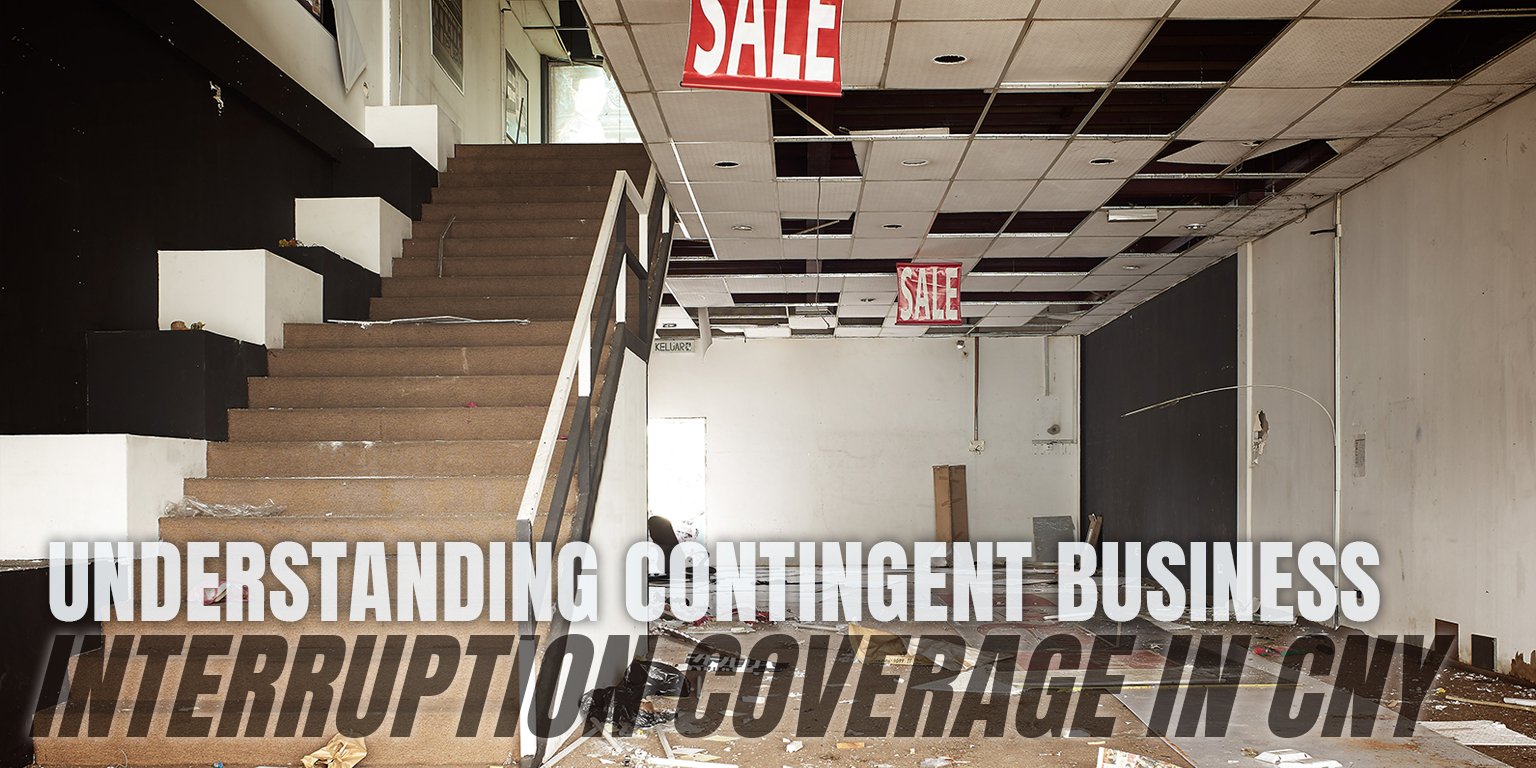Don’t Misuse the COI Description of Operations
September 30th, 2024
5 min read

As a Central New York business owner, have you considered the hidden risks in your certificate of insurance (COI)? Many businesses unwittingly expose themselves to significant liability by misusing the description of operations box, a crucial section of this document.
Misunderstanding insurance documentation can jeopardize your business's future, leading to
- denied claims,
- legal disputes, and
- financial losses.
At the Horan insurance agency, we understand these concerns. As an independent agency working with multiple carriers, we bring a unique, informed perspective to help you navigate these complexities.
In this article, we'll explore the proper use of the COI description of operations box, common misuses, and their potential risks. We'll also provide practical steps to ensure you're using this document correctly, protecting your business from potential pitfalls.
By reading to the end, you'll have the knowledge to confidently manage your COIs and safeguard your business's future.
Understanding the Anatomy of a Certificate of Insurance
A certificate of insurance (COI) serves as evidence of insurance coverage, often requested by clients or partners before entering into a business relationship. It's crucial to understand its key components:
- Warning Statement: At the very top, there's a critical warning that the certificate is for information only and doesn't alter coverage.
- Coverage Details: The main body lists the types of coverage and policy limits.
- Certificate Holder Box: Near the bottom, this identifies the entity requesting proof of insurance.
- Additional Insured Checkbox: This indicates whether the certificate holder is also an additional insured on the policy.
- Description of Operations Box: Located about two-thirds down the page, this large rectangular box is where the nature of the insured's work is briefly described, ideally in no more than about 100 words.
The True Purpose and Common Misuse of the Description Box
The description of operations box serves a simple yet crucial function: to briefly describe the kind of work being done by the insured party. It's meant to provide a concise overview of the operations, products, or locations covered by the insurance policy, ideally in no more than about 100 words.
For example, if you run a market research company in Syracuse, the description might read:
“Insured's scope of work includes surveying hospital visitors from August 1 to December 31, 2024, at 221 E. Irving Street, Syracuse, New York.”
This description clearly outlines the nature of the work, the location, and the timeframe—all within the intended use of this section.
However, many businesses and certificate holders have begun to misuse this box as a catch-all for additional insurance terms and conditions. They often request specific language be inserted, such as:
“ABC Corporation, its successors, assigns, affiliates, and employees are hereby listed as additional insured and will be indemnified and held harmless in the event of any wrongdoing.”

This practice is problematic because it
- exceeds the intended purpose of the description box,
- doesn't align with the actual policy terms,
- creates false expectations of coverage, and
- puts insurance agents in a difficult position.
The Ripple Effect: How Misuse Impacts All Parties
Misusing the description of operations box creates risks for all parties involved:
- Insured Parties may believe they've expanded their coverage when they haven't, leaving them vulnerable to unexpected out-of-pocket expenses and legal disputes.
- Certificate Holders might think they've secured extra protection that isn't actually enforceable, potentially leading to financial losses and damaged business relationships.
- Insurance Agents face the risk of errors and omissions (E&O) claims if they misrepresent coverage by adding inappropriate language to the description box.
These risks stem from a fundamental misunderstanding: the certificate doesn't grant or modify coverage; it merely provides evidence of existing coverage.
Real-World Scenarios: When Misuse Leads to Trouble
To better understand the potential consequences of misusing the description of operations box, let's explore two real-world scenarios.
In our first scenario, imagine you're a hay farmer in Oswego County. A landowner you work with requests that your COI description of operations state: “Coverage applies to any agricultural work arising out of the insured's use of the property.” This language is problematic for several reasons:
- It's overly broad, potentially implying coverage for activities not included in your policy.
- It could be interpreted to cover operations you're not currently engaged in, like cattle raising or hemp cultivation.
- It might lead the landowner to believe they have protection for activities not actually covered by your insurance.
If an incident occurs related to an agricultural activity not covered by your policy, the landowner might try to claim against your insurance, only to find out there's no coverage. This could lead to a legal dispute, damaged business relationships, and potential financial losses for both parties.
In our second scenario, a Syracuse-based construction company is asked to add language to their COI stating: “All subcontractors, property owners, and project managers are additional insureds.”
This blanket statement doesn't align with how additional insured status actually works. It needs to be specifically endorsed on the policy, often with limitations. The COI can't grant this status; it can only reflect what's in the policy.
If a claim arises and one of these parties tries to rely on the COI language for coverage, they might find themselves without the protection they thought they had. This could lead to costly legal battles and financial losses for all involved.
These scenarios highlight the importance of using the description of operations box correctly. However, the issue isn't limited to individual cases. It's a widespread problem in the insurance industry.
The Insurance Industry's Dilemma: Balancing Client Requests with Proper Practice
Many insurance agencies, under pressure from clients or out of a desire to maintain business relationships, acquiesce to inappropriate requests for additional language in the description box.
This widespread practice has set a problematic precedent, making it more difficult for agencies that try to maintain proper documentation practices, like Horan.
Some agents might be tempted to comply with these requests, essentially gambling that no claim will ever arise that exposes the discrepancy between the certificate and the actual policy coverage. However, this practice is extremely risky and could lead to serious legal and financial consequences.
Safeguarding Your Business: Best Practices for Using the Description of Operations Box
To protect your business and ensure proper use of the COI, follow these best practices:
- Keep it simple and specific: Use the box only to describe the actual operations, locations, or products covered by the policy.
- Align with the policy: Ensure that what's written in the description box matches what's covered in the actual insurance policy.
- Resist pressure: Don't agree to add language that goes beyond the box's intended purpose.
- Address additional coverage properly: If additional insured status or specific coverage is required, address this through policy endorsements, not COI language.
- Educate your team: Make sure everyone in your organization who deals with COIs understands their proper use.
- Regular review: Periodically review your COIs to ensure they accurately reflect your current operations and coverage.
- Respect limitations: Aim to keep the description to about 100 words at most.
- Let the certificate speak for itself: Trust the certificate's structure to illustrate coverage based on what's filled in throughout the document.
What You Should Do When Faced with Resistance
If you encounter resistance when requesting appropriate use of the description box:
- Request a copy of the agent's E&O policy.
- Seek a second opinion from another insurance agency.
- Consider finding a new insurance partner who prioritizes ethical practices.
Protect Your Business with Accepted Insurance Documentation
Don't let a misunderstanding about insurance documentation put your Central New York business at risk. Acceptable use of the certificate of insurance, including the description of operations box, is crucial for protecting your business and maintaining clear, honest relationships with your clients and partners.
At Horan, we're committed to being your trusted resource and advocate for your insurance needs. We'll work closely with you to verify your insurance documentation accurately reflects your coverage.
With our guidance, you can:
- Confidently manage your COIs and other insurance documents
- Avoid common pitfalls that could leave your business exposed
- Maintain strong, trust-based relationships with your business partners
- Focus on growing your business, knowing your insurance documentation is in order
Don't wait for a claim to discover you've been misusing your COI. Take action now to review your insurance documentation and determine if it's being used correctly.
Click the Get a Quote button below to start a conversation with our team. Let's work together to safeguard your business's future with tailored insurance coverage and documentation.
Also be sure to read: The Importance of Being Listed as an Additional Insured on CNY Policies.
Daniel is an accomplished content creator. He has been working in publishing for almost two decades. Horan Companies hired Daniel as its content manager in November 2022. The agency entrusted its messaging to him. Since then, Daniel has written insurance articles, service pages, PDF guides, and more. All in an effort to educate CNY readers. He's helping them understand the world of insurance so they can make informed decisions.
Topics:



























